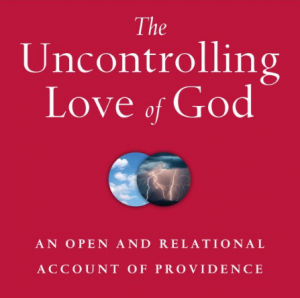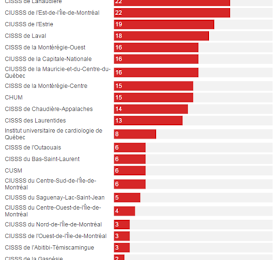The issue is that the open theist, who maximizes freedom on the part of God and humans and creation and who believes in miracles, implicates God in the choice to act sometimes for redemption and goodness and at other times not to act. Thus, God has a choice when to act and, if so, God chooses sometimes to act and at other times not to act. But in not acting when God could bring about the good if God acted, God is implicated in evil, the very problem open theism attempts to resolve.

So, to Thomas Jay Oord’s new book, The Uncontrolling Love of God, and his final chapter on miracles, where he explains how his “open and relational” God acts miraculously. Oord calls his theory at times “essential kenosis,” that is that God’s essence is love and God cannot but act in love. God also grants freedom to creation and to humans and his love prohibits God from coercing either creation or humans against will, however that will or nature has been established in creation. Here is how Oord summarizes his view, a view that precipitates his theory of God and miracles:
Out of love, God necessarily provides creation and all creatures what they need to exist and act. Although intrinsically good because divinely created, creatures sometimes act in ways that cause evil. God cannot prevent the horrors and holocausts caused by free will, agency, self-organizing entities and random events because God’s self-giving love necessarily creates, sustains, inspires and operates in the universe. The time-full and living God of love cannot foreknow and thereby prevent the evil that free creatures do or random events cause. As an omnipresent and incorporeal spirit, God does not have a localized divine body with which to thwart evils through divine bodily impact. God calls upon creatures to use their bodies to cooperate with God to do good and prevent evil (188).
Does this make God Less-Than-Almighty?
As I see it, God is almighty in at least three senses. God is … 1. mightier than all others. 2. the only One who exerts might upon all that exists. 3. the ultimate source of might for all others (189).
Are miracles violations of the laws of nature? He contends this definition does not work because the laws are hard to define and because it makes the laws transcend God or that God has to violate them somehow. [Oord contends God’s love establishes lawlike regularities.] Others define miracles as “God’s intervention in the natural processes of life.” He has problems with the notion of intervention, which makes God outside of creation too much. So Oord defines a miracle as:
… a miracle is an unusual and good event that occurs through God’s special action in relation to creation (196).
All of life is not called a “miracle” in the Bible; miracles are unusual not usual. Furthermore, miracles are good in intent and result. Most important is Oord’s “special action.”
. Essential kenosis claims, however, that special action never involves total divine control. It does not require God withdrawing, overriding or failing to provide freedom, agency or self-organization to creation. Special divine action does not entail interrupting the lawlike regularities of existence or interfering with processes that arise from God’s consistent, existence-giving love for all creation. As I use the phrase “special divine action,” it does not mean supernatural intervention in the sense of God superseding nature. …
The special divine action that makes miracles possible occurs when God provides new possibilities, forms, structures or ways of being to creatures (199).
In light of the past and present, God lovingly invites creatures and creation to cooperate to enact a future in which well-being is established in surprising and positive ways. When creatures respond well to this special divine activity, miracles occur (200).
If the cooperation of humans is emphasized in miracles, what about “nature” miracles? Here is Oord’s final summary, from p. 211:
No miracle story in the Bible explicitly mentions total divine control, and most specifically mention creaturely cooperation. All miracles involve special divine action that offers unusual and beneficial ways of existing, and miracles occur as creation cooperates. In agent- or organism-related miracles, creatures respond well to God’s loving activity. In miracles among simple entities, aggregates of entities and systems of nature, God sometimes enacts miracles without transgressing the lawlike regularities that derive from God’s love for all creation (211).
Oord concludes with some advantages of his essential kenosis theory of God and miracles:
- This definition of miracles evades legitimate criticisms of other definitions.
- The biblical witness supports an essential kenosis understanding of miracles.
- The God who cannot control others is not culpable for failing to coerce to enact miracles.
- Essential kenosis shifts blame from the faith-filled victim to bodily agents, organisms, organs or entities that do not or cannot cooperate with God.
- Essential kenosis affirms that God’s activity makes possible the healing that comes through health-care providers.
- An essential kenosis view of miracles powerfully illustrates why we need both theology and science when trying to understand reality.
- Essential kenosis may help us recognize objective miracles in the world.
My question: Does this “special action” de-implicate God when God does not have “special action”? I’d say it does not de-implicate God. I’m not sure Oord’s theory resolves the problem.





